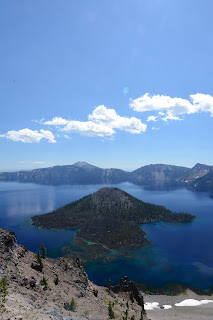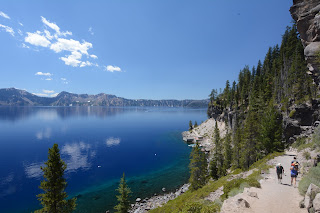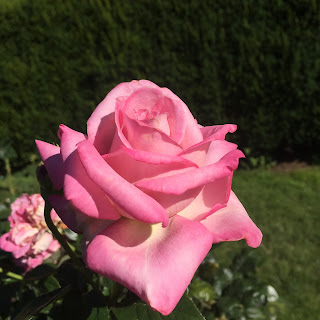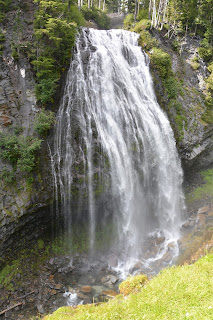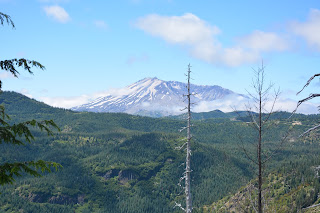We awoke to chilly temperatures in Crater Lake and eventually said our goodbye’s to Alena. We knew we had a longer drive (six hours) ahead of us so we intended to get going as early as we could. Our site was all packed up and we were on the road by 9:15.
The drive down took us on a tour of the Volcanic Scenic Highway through Oregon before we eventually met up with the I-5 and headed just north to Grant’s Pass. From here we eventually joined up with US 101 and headed down the coast to California after a quick stop at an agricultural checkpoint to avoid any potential pest coming into the state and destroying their crops. Over the course of our trip, we have observed many different methods used to prevent the spread of invasive species. All through Montana and Wyoming there were boat inspection stations and spraying stations to prevent aquatic invasive hitchhikers from traveling from one body of water to another. There were multiple signs informing people of the spread of invasive and in the case of Crater Lake they banned snorkeling and scuba from the lake as a precaution. These species are a major threat to the tourism industries (sportfishing) and agricultural industries, let alone the potential ecological disturbances that can arise.
We reached the northern edge of Redwood National Park around 3:30 and stopped into a visitor station to learn the interesting things to do. He suggested we backtrack up the road we came in on for a couple miles and take the scenic route to Crescent City where we would meet up with the 101. We obliged and even took his advice to take a swim in the Smith River. We pulled up to a swimming hole and jumped in. Again there was a nice rock to jump off of into the water, so I did. This water wasn’t as cold as Crater Lake but was a nice welcome to the heat of the day which had reached over 100 degrees during our drive.
We continued down the Howland Hill road until we reached the Stout Grove. This grove of old growth redwood trees was the “Old Faithful” of the park according to the ranger we talked to. A picture cannot do justice - the trees are at least 10 feet in diameter and over 100 feet tall.
After enjoying the grove, we continued through the road to Crescent City, where we resupplied on some fresh groceries for dinner. We then headed south to our campsite. We settled into the campsite, set up our tent, whipped up some nice lentil and quinoa soup and quesadillas and then headed to bed. Our next day would be another longer drive but it would take us along the coastal highway for a long stretch so it was planned to be very scenic.
We woke up, packed up our site and planned a location for breakfast. We planned to stop at the Klamath River overlook where it is possible to see seals and potentially whales from the overlooking cliffs. We pulled in and we saw a wall of clouds. The ocean, as far as we could see, was covered with clouds. Our plan to drive this scenic route had hit a major roadblock in the first 20 minutes.
We proceeded on because that was the only option. We headed south to another scenic byway (the Newton Drury Scenic Parkway) through another old-growth redwood stand. This winded us down and around eventually meeting up with the 101 again. We then hopped back on the 101 and headed south through numerous small towns and eventually made a turn off to head to Fort Bragg and enjoy the coastal views.
Our views for the entire drive consisted of the shoreline opaqued by fog coming off of the ocean. We could at times see faint waves crashing on the shore, but the trend for the three hour stretch of the drive was the first 50 yards of the coast were covered in a thick fog, the remaining inland area was cloud-free. With each mile, we kept thinking the fog was going to break, but as we pulled into Salt Point State Park for the evening, we have yet to see an unobstructed view of the Pacific Ocean. Oh well.














